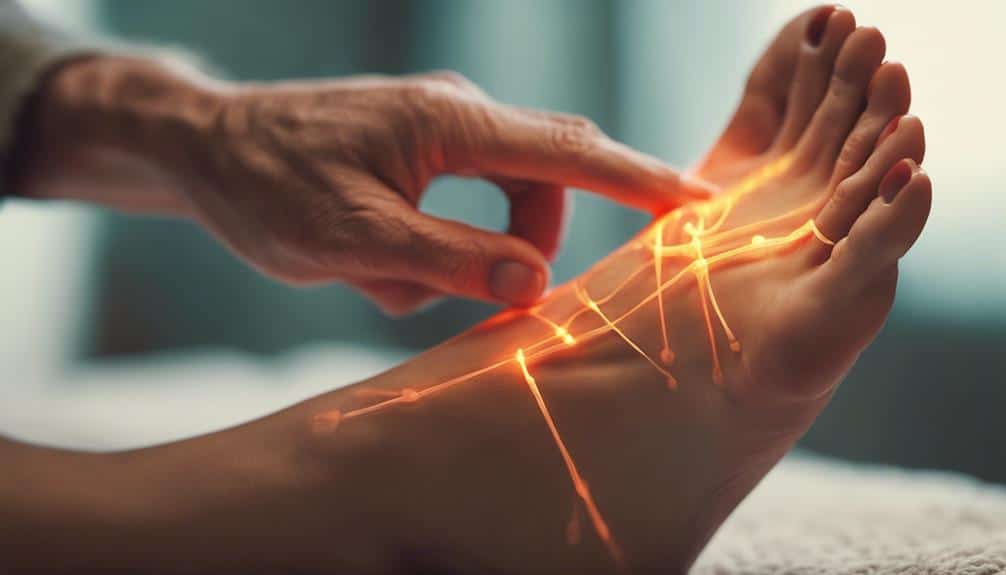Discover how deep tissue massage can ease chronic pain and boost circulation naturally. Embrace healing in every deeply held knot without resorting to harsh interventions.
In today’s world filled with screens, sedentary habits, and constant stress, chronic aches and poor blood flow seem increasingly common. This article explores deep tissue massage as a gentle yet powerful natural approach to chronic pain and improved circulation, blending expert-backed insights, natural healing methods, and fun facts. You will learn how focused, firm pressure works wonders. For example, did you know that the deep tissue technique was influenced centuries ago by both ancient sports massage traditions and modern physical therapy? We will uncover its benefits, what to expect, and even how maintaining a clean, stress-free workspace can complement recovery. Read on for deeper healing.
1 Why Deep Tissue Massage Targets Pain and Circulation
Here is where the science meets relief.
Deep tissue massage uses sustained, focused pressure to penetrate muscle layers and connective tissue. This helps dissolve adhesions, which are tiny bands of painful, stiff tissue that develop after repetitive strain or injury. As those adhesions release, blood vessels open more freely, increasing oxygen and nutrient delivery to muscle fibers. Over time, this process can significantly reduce chronic pain and amplify blood circulation, making you feel more limber and alive.
2 How It Works: Technique Meets Physiology
Here is what happens under the surface.
While you might imagine gentle stroking, deep tissue calls for slower, firmer strokes across muscle grain and direct pressure on tight spots. This forces stagnant fluid out of cramped tissues, making way for fresh, oxygen-rich blood. It also triggers the release of endorphins, which are natural pain relievers, helping with long-term comfort. A fascinating fact is that studies have found as little as a single deep session can increase local circulation by up to 400 percent immediately afterward. That kind of spike is why many athletes rely on it after intense training.
3 Long-Term Benefits You Can Feel
Here is how regular sessions add up.
Over multiple treatments, the benefits compound. You will likely notice improved flexibility, reduced stiffness, and more energy as tissues regain suppleness. Better circulation supports lymphatic drainage, flushing toxins and easing inflammation. It can also improve posture by releasing chronically tight muscles, making your everyday movements smoother.
4 A Clean Space Supports Healing
Here is something you might not expect, but it matters.
Imagine this: a cleaning service devoted exclusively to commercial environments, such as four seasons commercial cleaning, steps in to ensure every surface gleams and every area feels fresh. Their team provides daily maintenance, deep disinfection, carpet care, floor waxing, trash removal, post-construction cleanup and even day-porter services that tackle spills and restock supplies throughout the day. Working across sectors that range from medical facilities that demand strict hygiene, to schools where safety is key, to gyms where sanitization is paramount, they deliver consistency and peace of mind. They bring decades of experience and make sure spaces remain healthy without interruption, backed by satisfaction guarantees and flexible scheduling to suit evolving needs. A clean, calm environment like that not only reduces stress but also prepares the body and mind for the full benefits of deep tissue work.
5 What to Expect in a Session
Here is a brief guide to the journey.
Expect to lie comfortably on a massage table as your therapist assesses tight muscle bands. They apply firm, directed pressure, often using thumbs, forearms, or elbows, and may pause on particularly knotted areas to release tension. You might feel mild discomfort, but it is intentional rather than painful, and afterwards you may feel both tender and tension-free. Following up with hydration and gentle movement helps maintain the improved circulation.
6 Fun Fact Break: Muscles and Massage
Here is something to share over coffee.
Your body is mostly water, about 70 percent. That includes your muscles and connective tissue, which deep tissue massage helps mobilize. When circulation improves, hydration at the cellular level becomes more efficient, enhancing your overall radiance and resilience. Massage can also boost mood by lowering cortisol, the stress hormone. Studies show up to a 30 percent reduction after repeated sessions.
7 DIY Tips Between Sessions
Here is what you can do on your own.
In between sessions, try gentle self-massage using a foam roller or tennis ball to ease knotted areas. Keep moving with walking, gentle yoga, or stretches to maintain blood flow. Hydrate well, and take short posture breaks if you sit at a desk because circulation thrives on movement.
Here is the heart of it all.
Deep tissue massage is not just a remedy, it is an invitation to engage with your body’s healing capacity. Through firm, mindful touch, your muscles soften, circulation increases, and pain starts to fade. Pair that with a serene, immaculate environment and you have the perfect setting for restoration. Embrace it regularly and your body will reward you with flexibility, energy, and the quiet joy of ease.





Leave a Reply